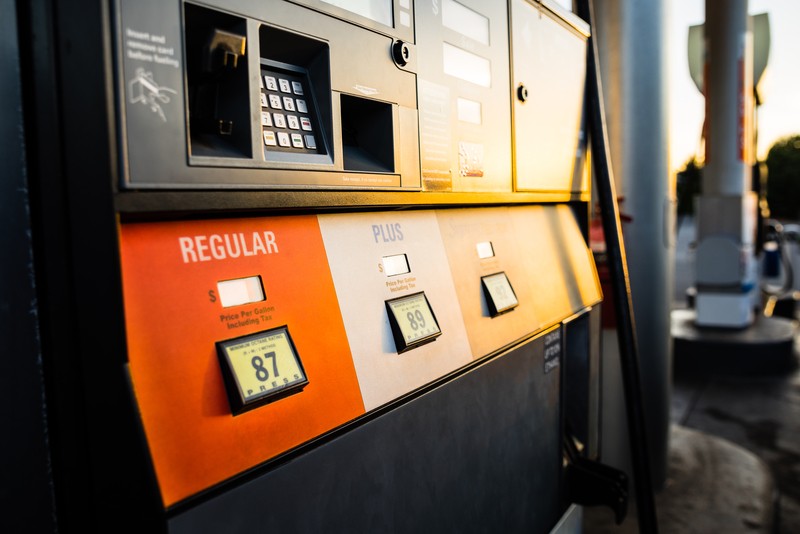Saving money is the constant thought at the forefront of most peoples' minds. One of the best ways you can do this is to change your driving habits and properly maintain your vehicle.
This will allow you to spend less money on fuel and when you are bugging out, it will enable you to drive further without worry of running out of gas miles from your bug out destination.
- Fill-up early in the morning or late at night – Gasoline becomes denser in colder temperatures. Since gas pumps are set to measure the volume of the fuel that you pump and not the density, you could get more gas for your money!
- Turn the nozzle – When you have finished filling up your gas tank, try turning the nozzle of the hose a full 180 degrees. This will drain a bit more gas into your tank, and in some cases up to an entire half cup that would otherwise be a bonus to the next gas customer.
- Keep your engine properly maintained – Fixing a car that is noticeably out of tune or has failed an emissions test can improve its gas mileage by an average of 4 percent, though results vary based on the kind of repair and how well it is done. Fixing a serious maintenance problem, such as a faulty oxygen sensor, can improve your mileage by as much as 40 percent.
- Check the alignment of your car – Improper alignment will cause a certain amount of engine drag, which will increase the amount of gas that you're using.
- Rotate your tires – When you regularly rotate your tires and check them for uneven use and wear, you will find that you are saving money on both tires and gas.
- Remove snow tires – When it isn't winter and there is no snow on the ground, you should replace your winter tires with summer tires or all season radials. Snow tires are heavier and weigh down the car as well as have deep treads which will reduce gas mileage.
- Check and replace air filters regularly – Replacing a clogged air filter can improve your car's gas mileage by as much as 10 percent. Your car's air filter keeps impurities from damaging the inside of your engine. Not only will replacing a dirty air filter save gas, it will protect your engine.
- Keep tires properly inflated – You can improve your gas mileage by around 3.3 percent by keeping your tires inflated to the proper pressure. Under-inflated tires can lower gas mileage by 0.4 percent for every 1 psi drop in pressure of all four tires. Properly inflated tires are safer and last longer.
- Observe the speed limit – While each vehicle reaches its optimal fuel economy at a different speed (or range of speeds), gas mileage usually decreases rapidly at speeds above 60 mph. As a rule of thumb, you can assume that each 5 mph you drive over 60 mph is like paying an additional $0.20 per gallon for gas. Observing the speed limit is also safer.
- Remove excess weight – Avoid keeping unnecessary items in your vehicle, especially heavy ones. An extra 100 pounds in your vehicle could reduce your MPG by up to 2%. The reduction is based on the percentage of extra weight relative to the vehicle's weight and affects smaller vehicles more than larger ones.
- Use cruise control – Using cruise control on the highway helps you maintain a constant speed and, in most cases, will save gas.
- Avoid sudden stops and turns – Studies indicate that when you brake gradually, start slowly, and avoid those sudden stops that you can increase your fuel efficiency.
- Plan ahead and combine trips – Combining errands into one trip saves you time and money. Several short trips taken from a cold start can use twice as much fuel as a longer multipurpose trip covering the same distance when the engine is warm. Trip planning ensures that traveling is done when the engine is warmed-up and efficient. With a little planning, you can avoid retracing your route and reduce the distance you travel as well. You'll not only save fuel, but also reduce wear and tear on your car.
- Commuting – If you can stagger your work hours to avoid peak rush hours, you'll spend less time sitting in traffic and consume less fuel. If you own more than one vehicle, drive the one that gets the best gas mileage whenever possible. Consider telecommuting (working from home) if your employer permits it.
- Buy a more efficient vehicle – Selecting which vehicle to purchase is the most important fuel economy decision you'll make. The difference between a car that gets 20 MPG and one that gets 30 MPG amounts to $663 per year (assuming 15,000 miles of driving annually and a fuel cost of $2.65). That's $3,313 extra in fuel costs over five years!
It should come as no surprise that those who rarely have very much money also tend to have vehicles that are always needing repairs and seem to be on their last legs.
Rather than putting off the maintenance your vehicle needs, get it serviced immediately. Not only will this save you hundreds, if not thousands, of dollars in the long run just on repairs, but it will also enable you to save hundreds of dollars on fuel because your vehicle will be running as efficiently as it can be.
Follow these steps to stretch your fuel as far as it will go. You can see many more steps on how to save money on eBay.
